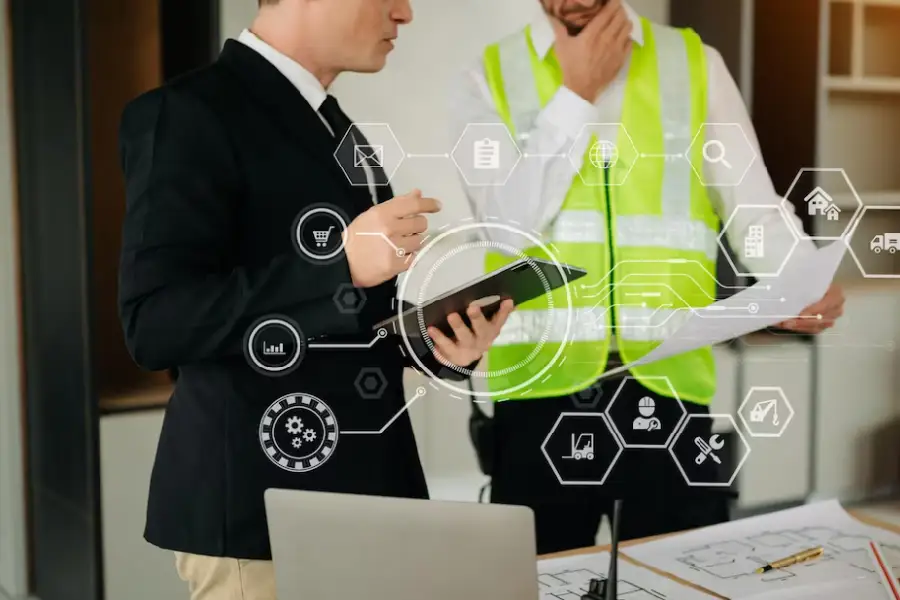The Necessary Guide to Center Administration: Techniques for Success
Facility monitoring plays a critical role in the overall success of a company, serving as the foundation that supports safety and security, performance, and productivity. The nuances of effective facility administration expand past plain logistics and require a detailed understanding of both qualitative and measurable metrics.
Recognizing Center Monitoring
What comprises efficient facility monitoring? Effective center management incorporates the sychronisation of different organizational features to ensure that developed settings are safe, efficient, and for performance. Facility Management. It incorporates the concepts of service, engineering, and style management to create a seamless functional flow within a company
Crucial element of center administration consist of room planning, upkeep management, and conformity with health and wellness regulations. Area preparation concentrates on optimizing making use of physical resources to sustain business goals, while maintenance administration makes certain that centers are maintained in optimum condition, making the most of life expectancy and minimizing functional costs. Conformity with governing and legal criteria is critical, as it safeguards the company versus prospective obligations and improves its reputation.
In addition, effective facility administration counts on the critical usage of technology, such as Structure Management Equipment (BMS) and Computer-Aided Facility Administration (CAFM) tools. These innovations facilitate real-time monitoring of structure systems and enhance upkeep processes. Inevitably, a detailed strategy to center management not only promotes operational efficiency yet likewise cultivates a positive atmosphere for site visitors and staff members alike, driving total business success.
Trick Techniques for Optimization
Optimizing facility management calls for a strategic strategy that lines up operational exercise with organizational goals. To achieve this, the very first key technique is the application of integrated technological services. Utilizing sophisticated software systems allows for real-time surveillance of facility procedures, helping with data-driven decision-making and enhancing overall effectiveness.
Secondly, routine evaluations of facility performance are important. Conducting routine assessments and audits makes it possible for center managers to identify areas that require enhancement, making sure that resources are alloted effectively. This aggressive technique aids in lessening downtime and boosting service distribution.
One more important strategy is promoting partnership across departments. By urging open interaction in between teams, facility managers can much better align their techniques with company objectives, resulting in enhanced operational harmony. Additionally, engaging personnel in training programs promotes a culture of responsibility and enhances their capability to contribute to optimization initiatives.
Enhancing Safety And Security Procedures
Enhancing safety and security procedures is crucial for producing a safe and secure atmosphere within facilities. A detailed security protocol not only secures staff members and visitors yet additionally improves operational efficiency. To accomplish this, facility managers need to carry out regular threat analyses to identify possible hazards and make sure that suitable steps are in place.
Educating and education are important parts of effective security methods - Facility Management. Employees should get continuous training in emergency situation procedures, tools handling, and individual safety measures. Routine drills, such as fire evacuations or lockdown procedures, foster familiarity and readiness among personnel
Additionally, clear interaction channels need to be developed to report safety and security worries quickly. This includes developing an available system for workers to articulate prospective threats or incidents without worry of retribution. Moreover, leveraging modern technology can enhance security actions; for instance, implementing security systems and gain access to controls helps check facility tasks and restrict unapproved access.
Finally, conformity with local laws and market requirements is non-negotiable. Regular audits and evaluations of safety and security procedures ensure alignment with current legislations and ideal techniques. By prioritizing these strategies, facility managers can grow a society of safety and security that secures all stakeholders and inevitably adds to the organization's success.
Improving Workplace Environment

Ergonomic factors to consider are vital to lessen physical stress and discomfort. Facility Management. This involves offering adjustable furniture, correct lighting, and ample room for movement. These changes can cause reduced absence and enhanced job satisfaction
Aesthetics play a vital function in shaping the office environment. Making use of color psychology, natural lights, and greenery can cultivate a inviting and stimulating setting. Attentively developed spaces can improve imagination and improve general well-being.
Moreover, motivating employee engagement via inclusive decision-making processes can enhance the sense of possession and belonging. Collecting comments on office renovations and entailing employees in the layout procedure can cause a more tailored environment that meets their requirements.
Finally, advertising well-being initiatives, such as health cares and relaxation areas, can even more contribute to a helpful office society. By focusing on these strategies, facility managers can successfully improve the workplace atmosphere, driving both worker contentment and business success.
Determining Success in Facilities
Determining success in center management requires an extensive technique that assesses both measurable and qualitative metrics. Quantitative metrics typically consist of vital performance signs (KPIs) such as space usage prices, energy usage, upkeep prices, and tenancy levels. These metrics offer a clear photo of functional effectiveness and monetary efficiency, enabling center managers to determine locations for renovation and benchmark versus sector requirements.
Qualitative metrics, on the various other hand, focus on user satisfaction more info and worker engagement. Surveys and responses systems can assess just how well the centers meet the requirements of owners, assisting to analyze the total workplace atmosphere. This aspect is crucial, as a completely satisfied workforce is often linked to boosted productivity and retention rates.
To effectively determine success, center supervisors should additionally think about integrating modern technology, such as building management systems and data analytics devices, to collect and evaluate pertinent data. On a regular basis examining both sets of metrics permits an extra balanced view of performance and educates critical decisions. Eventually, an effective center management method rests on a commitment to continual improvement, guaranteeing that both functional effectiveness and customer contentment are focused on.
Final Thought

Facility monitoring plays a critical function in the total success of an organization, serving as the foundation that supports security, performance, and productivity.Secret elements of center management consist of area planning, maintenance management, and compliance with health and safety regulations.Furthermore, efficient center management depends on the critical use of innovation, such as Building Monitoring Solution (BMS) and Computer-Aided Facility Administration (CAFM) tools. Eventually, a comprehensive strategy to read more center management not just promotes operational effectiveness but also promotes a favorable setting for site visitors and staff members alike, driving total organizational success.
Inevitably, a successful facility management technique pivots on a dedication to constant renovation, ensuring that both functional effectiveness and customer contentment are prioritized.
 Luke Perry Then & Now!
Luke Perry Then & Now! Ben Savage Then & Now!
Ben Savage Then & Now! Jeremy Miller Then & Now!
Jeremy Miller Then & Now! Bo Derek Then & Now!
Bo Derek Then & Now! Robin McGraw Then & Now!
Robin McGraw Then & Now!